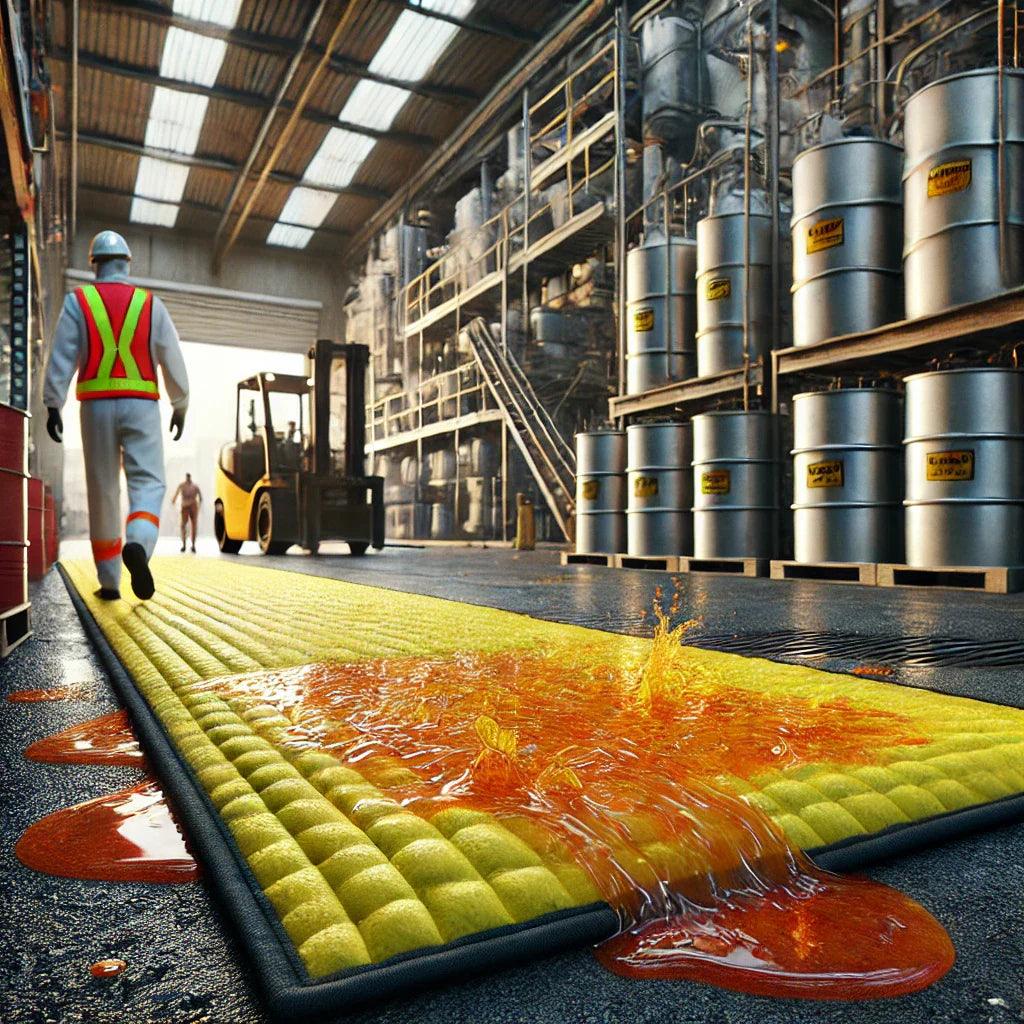Never Slip on a Spill Again!
Never Slip on a Spill Again!

In today's fast-paced industrial and commercial environments, effective spill management is crucial for maintaining safety, efficiency, and environmental responsibility. From manufacturing facilities to food service establishments, spills of oil, chemicals, water, and other liquids pose risks of contamination, accidents, and compliance issues. This guide explores strategies, tools, and products to help you master spill management in any setting.
1. Spill Prevention:
2. Spill Response Plan:
3. Utilize Effective Absorbent Solutions:
1. Absorbent Mats:
SupAbsorb Tech offers a range of innovative mats designed to handle diverse spill scenarios:
2. Spill Kits:
3. Personal Protective Equipment (PPE):
Automotive Industry: Use ultra-heavy-duty oil absorbent mats for spills of oil, coolants, and transmission fluids during vehicle maintenance.
Food and Beverage: Deploy StickyBack mats in kitchens and food preparation areas to manage cooking oil and water spills, ensuring hygiene and safety.
Healthcare: Universal fine fiber mats are perfect for absorbing bodily fluids and disinfectants in medical facilities, maintaining cleanliness and preventing contamination.
Construction and Mining: Heavy-duty absorbent mats prevent environmental contamination from fuel and hydraulic fluid leaks.
At SupAbsorb Tech, we prioritize sustainability by crafting absorbent mats from up to 90% recycled materials. These products are not only effective but also contribute to reducing your carbon footprint.
Mastering spill management is about preparation, the right tools, and a commitment to safety and sustainability. Whether you’re protecting employees, the environment, or your bottom line, investing in innovative solutions like SupAbsorb Tech’s absorbent mats ensures peace of mind and operational excellence.